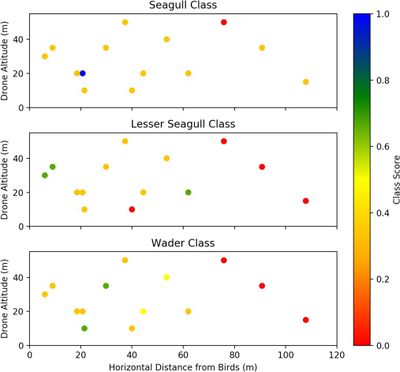Results
Bird identification
The specimens used in the experiment were sorted into 3 classes based on their size and contrast with the wet sand of tidal flat (typically, a dark brown). Thus, the two seagull specimens were place into a class called the “Seagull Class”. This class can be thought of as a representation of large, light-coloured (i.e. that contrast well against the ground substratum) seabirds. The second class defined is the “Lesser Seagull Class”. Into this class was placed the lesser black-backed gull specimen. This class can be thought of as a representation of small to medium, light- coloured seabirds. Finally, the remaining two specimens, the oystercatcher and the spur-winged lapwing, were grouped into a class called the “Wader Class”. This last class can be thought of as a representation of small to medium, dark-coloured (i.e. poorly contrasted) birds. It must be noted that one of the seagulls was removed from consideration in the Seagull Class. The specimen was removed as it was noted that all three bird watchers had great difficulty identifying it, even in images taken very close to the specimen, due to its broken neck.
In Figure 1, one can see the Seagull Class is the only class that had a non-zero Class Score beyond a horizontal distance of 80 metres. This result is likely due to the size and contrast of the seagull specimen. Overall, no class was reliably identifiable beyond 40 metres in altitude, and about 60 metres in horizontal distance.
From the results, it is recommended that the Inspire 2 be flown at an altitude of 30 metres in order to reliably identify medium- and large-sized seabirds.


